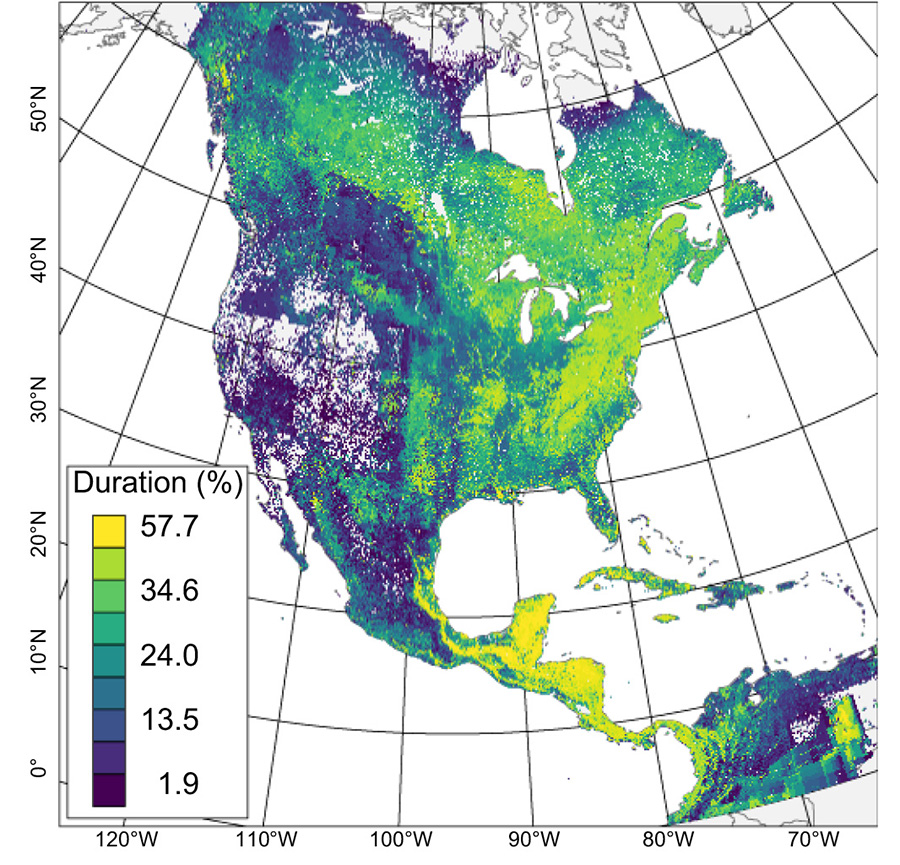Habitat loss, climate threaten eastern forest birds
By Pat Leonard
Human-caused habitat loss looms as the greatest threat to some North American breeding birds over the next few decades. The problem will be most severe on their wintering grounds, according to a new study published July 24 in the journal Global Change Biology.
By the end of this century, the study’s authors say, predicted changes in rainfall and temperature will compound the problem for birds that breed in eastern North America and winter in Central America.
“This is really the first study to measure the combined impact of climate change and land-use change over a bird’s full annual cycle,” said lead author Frank La Sorte, a research associate at the Cornell Lab of Ornithology. “Typically, studies tend to focus on the breeding season. If you do that, you’re missing the real story, which is inherently dynamic and complex.”

Migrant wintering grounds are vitally important because the birds spend a greater proportion of the year in these places.
“We found the species we studied spend up to 60 percent of the year on their wintering grounds in Central America, where they occur in higher numbers and densities,” said La Sorte. “That means more individuals of more species are likely to be exposed over a longer period of time to habitat loss as people continue to convert forests to cropland or grassland.”
The scientists ran dozens of scenarios to predict what the future might look like for 21 species, most of them flycatchers, vireos and warblers. They used observations that volunteers entered into the eBird database from 2004 through 2014 to establish where and in what density the species are found throughout the year. Then, they layered in modeled climate change projections (temperature and rainfall) and habitat data (land-use changes and the location of protected areas).
The study finds loss of wintering habitat in the near future will likely be magnified by the long-term effects of climate change. By the end of this century, the study species are expected to encounter several significant changes:
- Greater warming on the northern breeding grounds and during autumn migrations – a surface temperature increase of about 9°F (5°C) with uncertain consequences for breeding and migration success; a smaller increase of about 5.4°F (3°C) is projected for their wintering grounds.
- Less rain on the nonbreeding grounds: a projected decline of 20 percent or more during the summer would reduce available habitat and food for birds arriving after fall migration.
- More rain on the breeding grounds, nearing 25 percent more during the winter on their breeding grounds. This could enhance vegetation growth and increase insect densities for returning spring migrants – a positive trend if the birds arrive at the right time.
By examining the birds’ full life cycle, La Sorte pointed out, we learn that birds face a host of challenges all year long – and the intensity of those challenges shifts, depending on whether the birds are breeding, wintering or migrating. Short-term conservation action will be most effective if it’s targeted to the times and places birds face their biggest threats.
Knowing what may lie ahead in the long term underscores the need for action now to offset the impact of climate change.
“Human activities are placing pressure on bird populations from many different angles at varying intensities,” said La Sorte. “Birds are responding with tools designed to function under gradual environmental change – but how effective this will be under rapid change occurring from many different sources is not well understood.”
Pat Leonard is a staff writer for the Cornell Lab of Ornithology.
Media Contact
Get Cornell news delivered right to your inbox.
Subscribe